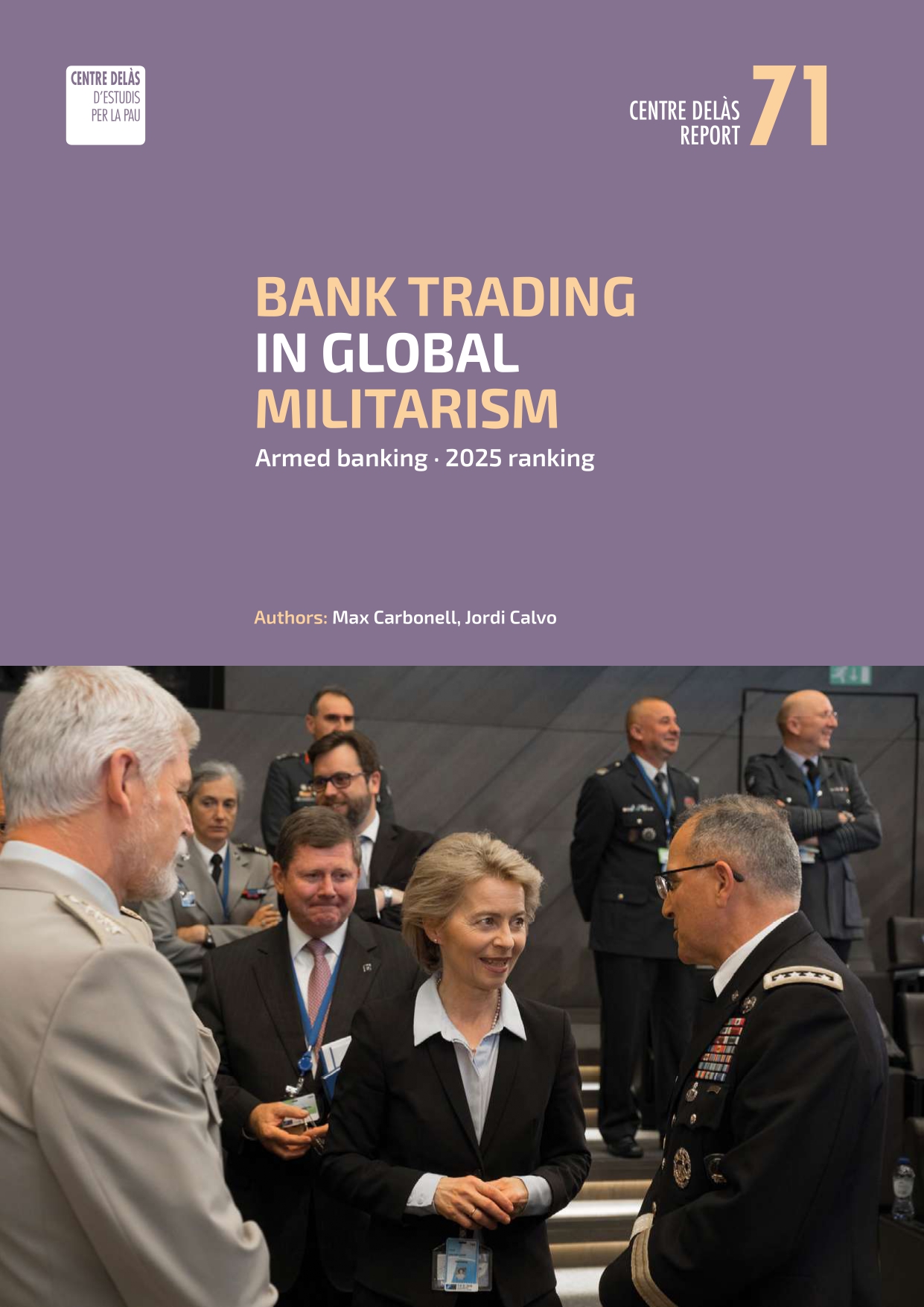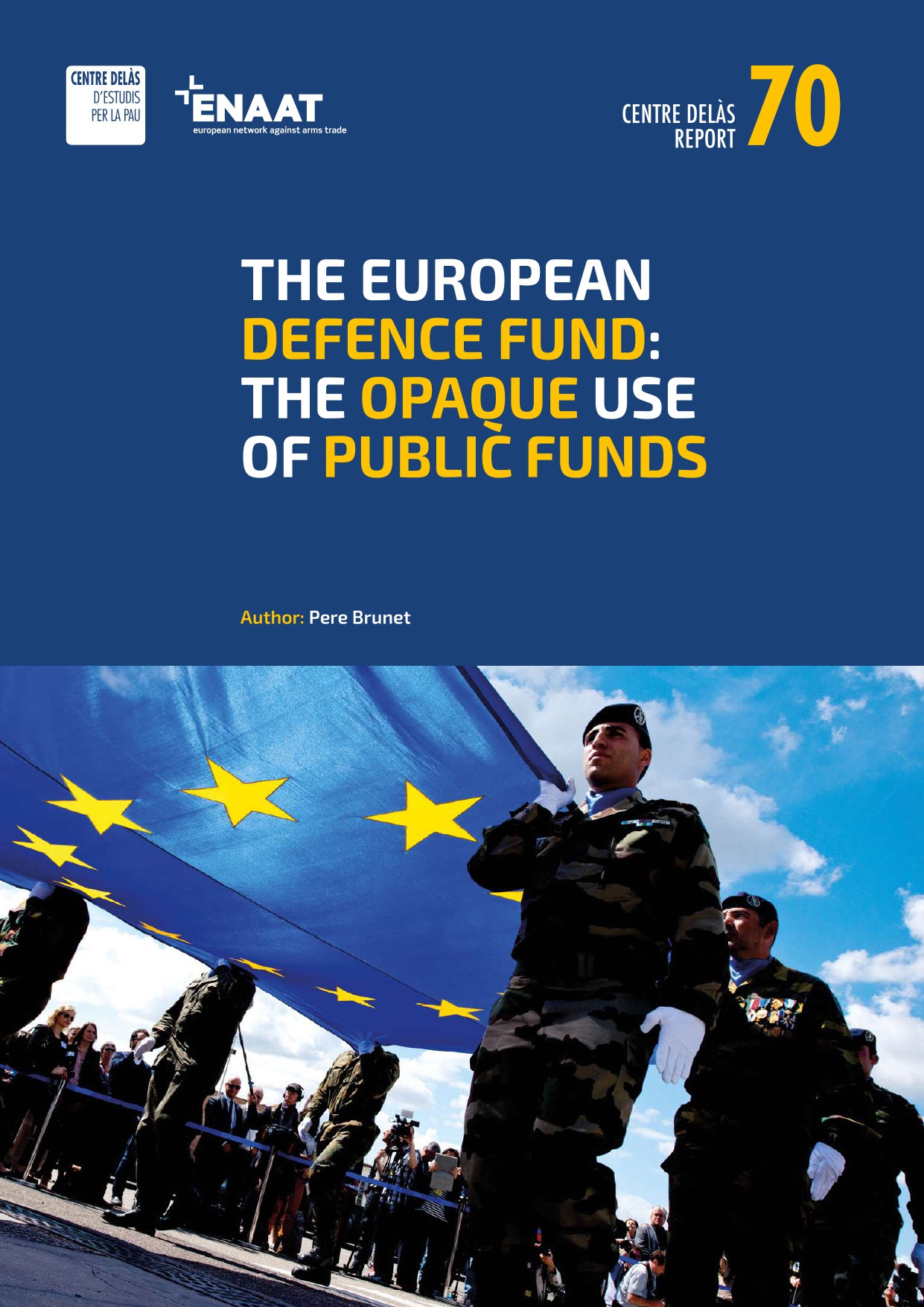European public money for the military industry
The European Union is working to approve a multimillionaire funding plan, which has the military industry as its main beneficiary.
Jean-Claude Junker, president of the European Commission, during his address on the state of the Union on November 14th 2016, announced the EU’s intention to promote and fund the military research. Nonetheless, the Commission was already working on it. In 2015, the European Commissioner for Internal Market, Industry, Entrepreneurship and SMEs, Elżbieta Bieńkowska, created the Group of Personalities (GOP) on defence research. Among the 18 members, 9 represented arms companies and defence research centres. To mention a few companies: BAE Systems, INDRA, Airbus Group (former EADS), Leonardo (former Finmeccanica). The aforementioned GOP presented a report in 2016 and the Commission followed many of its recommendations regarding funding, intellectual property, a guaranteed market and, from 2021 on, a funding program well provided for.
On June 7th 2017, the European Commission officially launched the European Defence Fund program. The Fund consists on different public financing instruments to finance Research and Development projects on technologies and products for military purposes. The industries and applied research groups working in these areas will be the main recipients of this funding. Priority will be given to state-of-the-art technologies such as autonomous systems (including drones), intelligence-surveillance, cybersecurity and maritime safety. The draft Defence Fund 2021-2027 describes such technologies as disruptive (“technologies whose application could radically change the concepts and the practice in defence-related business”, according to the text of the Defence Fund 2021-2027). According to European institutions, there are two goals to this program: to strengthen the military capacities of the EU Member States (and consequently their strategic autonomy), and to contribute to the development and the employment in Europe through the support to the competitiveness and innovation in this sector.
This program is planned in two steps. The first one (2017-2020), already approved, is on-going. It is funded with 590 millions of euros from the EU’s ordinary budget. It is expected that Member States will supplement this figure with at least an additional 2 billion (from their respective state budgets). The second step (2021-2027) is pending approval; the proposal being that it should be funded with 13.000 million from the EU’s budget. This is a huge number. Also, in this second step, Member States should contribute 35.600 million. If this second step is eventually approved, the EU will fund military research, together with the development of prototypes, testing, production and acquisition of military technology. And the European subsidies to arms industry will amount, between 2017 and 2027, up to 51.000 million euros. Most of this money will be provided as lost fund subsidies that industries won’t have to return. Moreover, it is predictable that Member States will not accept to increase their contribution to the EU budget to generate this substantial amount of money. If so, to be able to fund the military program, the EU will have to redistribute its budget, diverting allocations for civil policies towards this new defence fund.
One of the reasons put forward by the EU to activate this Defence Fund is the creation of jobs. This is a debatable argument. A study published in 2007 by two professors from the economy department of the Massachusetts University estimated and compared the number of jobs that could be created in the EU from an hypothetical $1.000 million investment in six areas: military spending, taxes reduction (which, according to the authors, would involve an increase of the private consumption), health services, education, public transports and construction (environment friendly houses and infrastructure repairing). The study is only based on an economic perspective and doesn’t hold any ethical or political view. The result is overwhelming: Investing $1.000 million in any of the five civil alternatives would create more jobs than investing this amount in the military sector. The differences cannot be overlooked. If the investments were made in the health care area or the rehabilitation of housing, they would generate a 50% more of jobs, when compared to the investment in the military. But if that money was invested in education or public transports, it would more than double the jobs created.
It must be noticed that the European Commission cannot make legislative proposals and cannot subsidize any action related to defence and security policies including military affairs, since the EU’s Treaty of Lisbon (2007) established that both the EU’s CFSP (common foreign and security policy) and CDSP (common security and defence policy) were under the control of the Member States. To avoid this restriction, the European Commission has prepared the proposals to subsidize the military R+D as a part of its industry policy, for which it has full competence.
Yet, this wouldn’t be the first time the EU allocates money to European security and defence industry. Back to 2003, the European Commission had already constituted a Group of Personalities in the security research area, which included 15 representatives (for a total of 28 members) of the arms industry and military research centres. Some of these representatives of the military industry were again members of the already mentioned 2015 GOP on military research. In February 2004, the Commission was already including most recommendations of this 2003 GOP, and announced the launch of a Preparatory Action on Security Research (PASR). In 2007, a large program on security research, the so-called ERSP, was integrated in the FP7 EU framework research program. The ERSP was extended until 2014, while increasing its budget.
It’s easy to link these new EU policies with the fact that, for some years now, the arms sector has been increasing its production towards surveillance and security technology. In addition to aircrafts and combat tanks, nowadays it also produces radars, detection systems, surveillance devices and biometrical identification systems, technology for walls surrounding borders, and other related systems.
The European security and defence industry is benefitting from European funding and it will continue benefiting in the future. So far, it receives funds for security-related technology: border walls, tracking systems, recognition, and others. And, if the Commission’s draft is approved, it will soon receive new huge subsidies to develop military technology. Moreover, the results of the R+D projects subsidized by the EU will belong to the specific arms industries receiving these public funds.
The EU budgets are made up of every Member State’s contribution and, therefore, they contribute to those European subsidies for military research and production. But let’s not forget that every Member State has state budget items that allocate money to defence, and that part of them are devoted to buy the production of the defence and security sector. In other words, this industrial sector is receiving public money from the EU and from every member. Besides, it’s possible that most EU member states will increase their military spending, among other reasons, to achieve the promise they made during the 2014 NATO Summit. We can therefore conclude that the European military spending is going to increase in a very substantial way during the years to come.
During one of the on-going phases of the Defence Fund, an exceptional clause was approved which excludes the European Parliament from the implementation of this program, with the excuse of a lack of time. In the draft of the Defence Fund regulation for 2021-2027, this clause was again included, although this time no excuses were mentioned. To put it in a nutshell, the draft proposes that only Member States can define what topics will be prioritized, and how to implement the program.
In the EU, there’s a clear will to increase military spending. The influence of the European security and defence sector and its lobbies, having close ties to powerful leaders and key civil servants of the European Commission, has been essential. This sector has had an important voice in the EU military research funding, being also the main interlocutor and influencer in its implementation.
Moreover, in the European Defence Fund regulation draft, Member States are asked an commitment on the acquisition of the technology products resulting from this funded research. In short, if this draft is eventually approved, the EU will fund military research with public money and the EU will also buy its results with public money. Also, the companies that were funded will keep holding the intellectual propriety. It is important to insist on the fact that a great amount of the money diverted to defence funding will come from reducing civil programs. If the EU wishes to contribute to the well being of its citizens and to world peace, giving money to the military sector is one of the worst choices.
Read the article in El Pais








